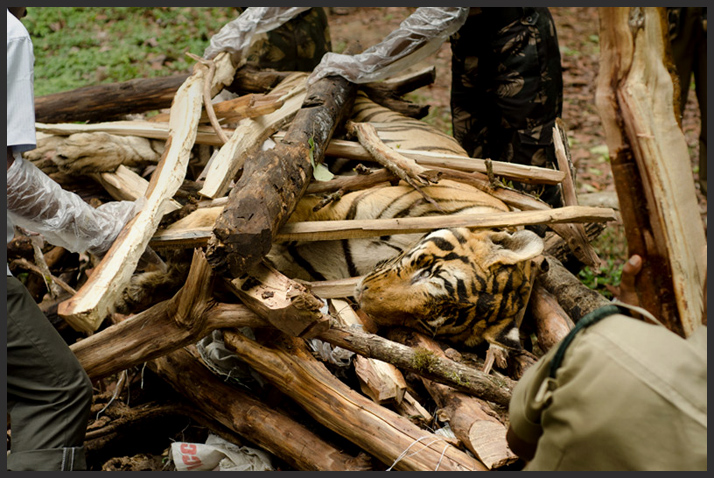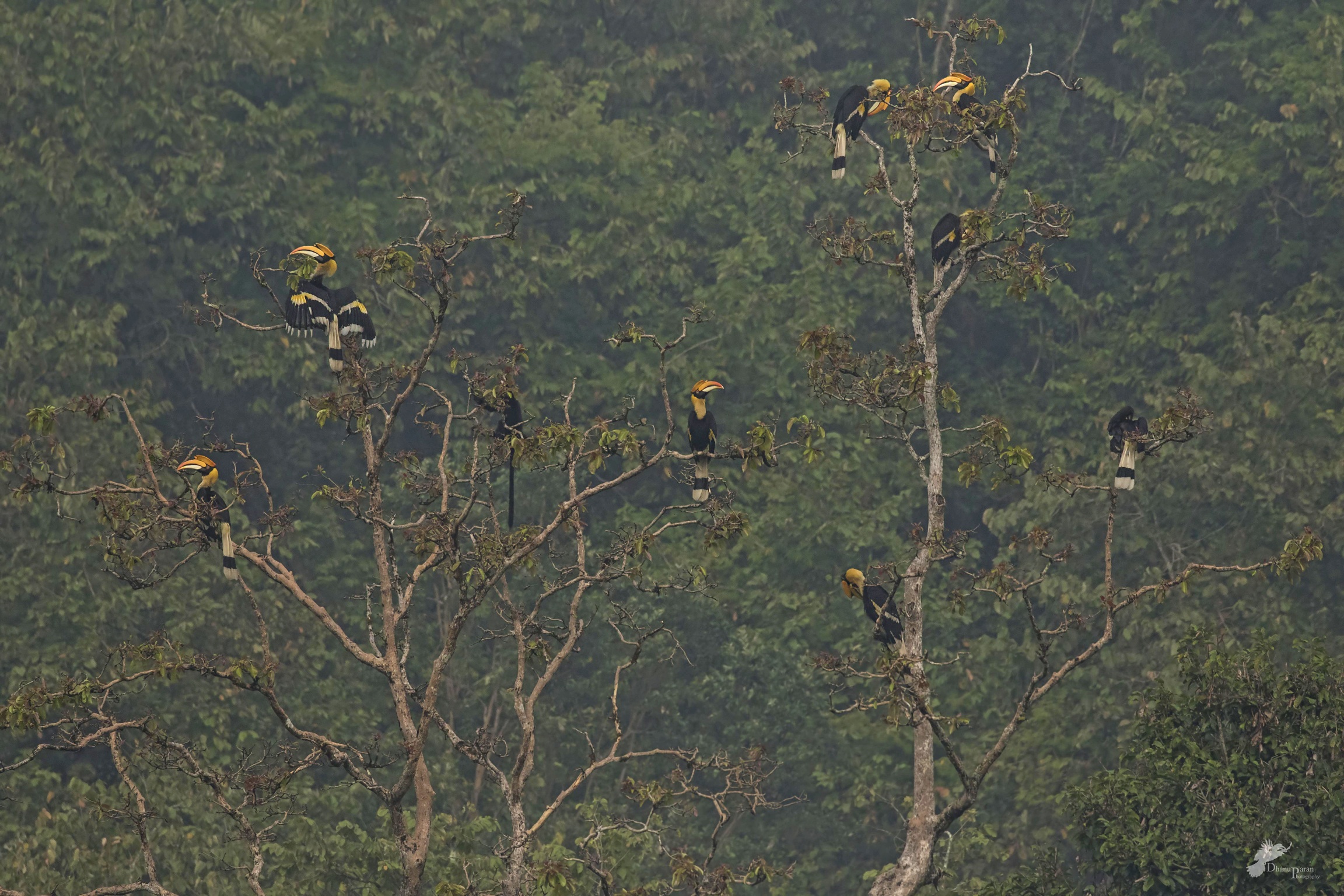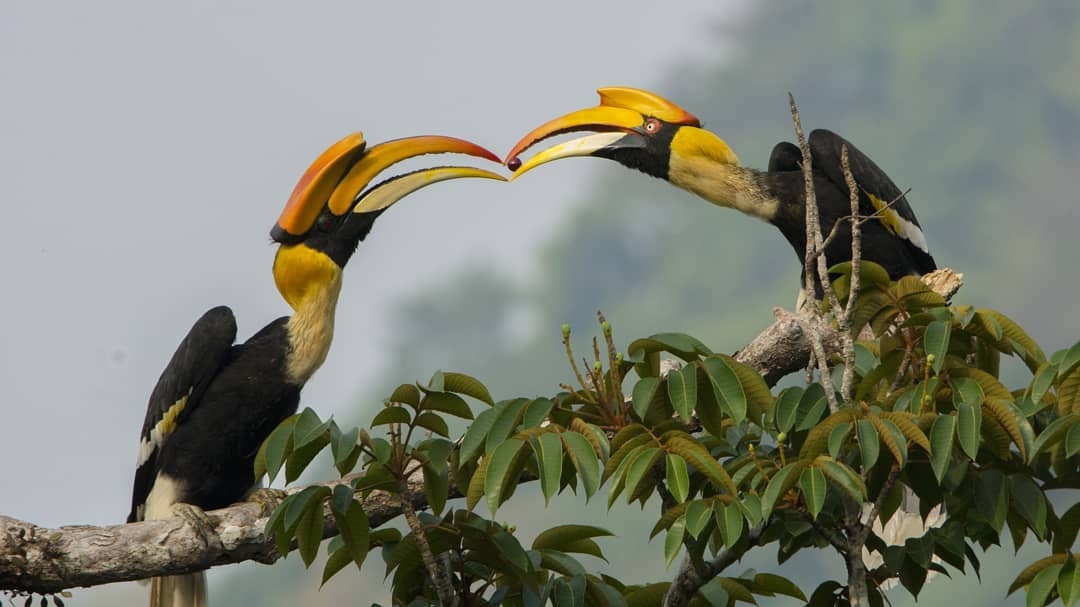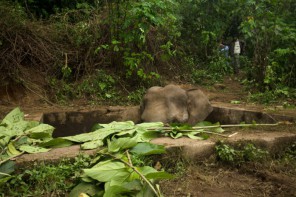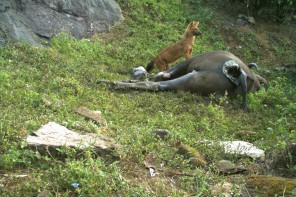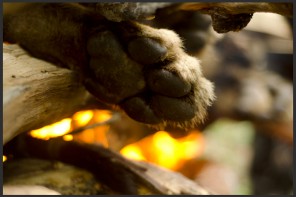These days, human-animal encounters gain wide coverage in popular media. The general public as a whole is thus aware of the incidents, and various management protocols such as crowd control, tranquilization, caging and release or relocation are finding their way into the consciousness of the local population. Sometimes reporting tends to slip into the sensationalistic side. While in this case, nothing worse than a tiger’s image has been hurt, often an incident gets grossly misrepresented and causes indirect damage to conservation efforts
On the 28th of April 2012, I was in Valparai in the Anamalais, Tamil Nadu and was surprised to hear a report of a tiger near human habitation. Leopards are common in Valparai, and a tiger, that too close to houses, was extremely rare. The tiger was sitting in the far end of a garden near a house, and appeared exhausted and unable to move. A large crowd had already gathered, and the forest department and police did a commendable job in keeping the crowd at bay. The tiger had reportedly been seen in the area for the last two weeks. A couple of days ago, it had preyed on a calf, and the owner, finding the carcass, had buried it. Forced to go for another one, the tiger had attacked a calf and was in turn attacked by a cow. It appeared to have been injured in the process, and there it lay in a nearby garden.

Everybody awaited a veterinarian, who had to travel all the way from Mudumalai. It took 10 hrs for the veterinarian to reach Valparai, but everyone patiently waited in spite of the rain. Such was the curiosity that the distressed tiger had evoked. The veterinarian darted the animal with a tranquilizer and the forest department team was able to approach the animal. It was discovered that the tiger was a 10-year old male. The tiger was then taken in a cage to the Manamboly Forest Camp, inside the Anamalai Tiger Reserve. Though the veterinarian stayed with the animal all night, we learnt that the tiger passed away the next morning.
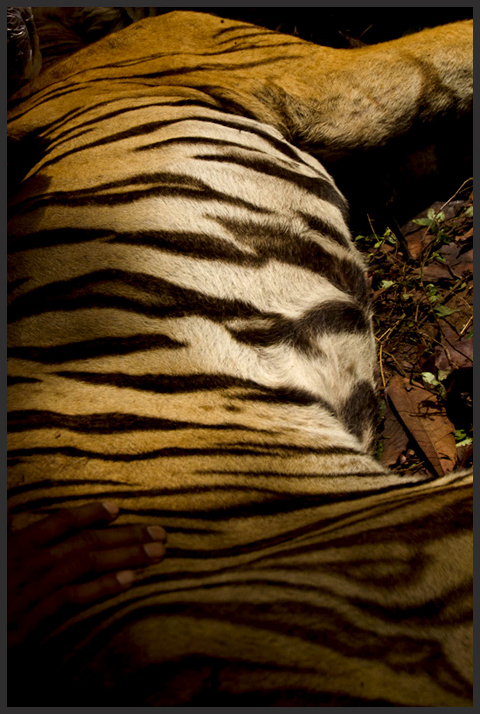
We reached Manamboly camp the next morning. The Tamil Nadu forest department had already laid the animal down on the ground. The tiger was massive. His tongue was out, and his eyes had gone inside the socket. He had pus-covered injuries around his sharp claws and his canines appeared worn out. Even in death, the tiger looked so majestic. With the veterinarian providing precise guidance, two anti-poaching watchers cut open the tiger methodically.
When they got to the heart, we were in for a surprise. Piercing the heart like little daggers, were two porcupine quills.
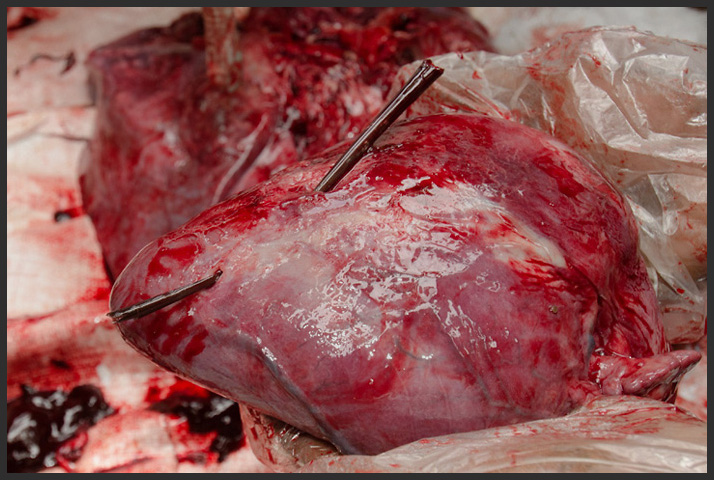
It appeared that the tiger had accidentally ingested the quills while preying on a porcupine. There was a half-foot long quill in the stomach too. The lungs had worms, and the kidneys also seemed pale. It was clear that the tiger had died in much pain from multiple-organ failure. But this was not how the newspapers told the story. Newspapers carried headlines such as, ‘Tiger loses fight to cow in Valparai’ and ‘Tiger attacked by cow dies’. What a disgrace for a tiger! I wish reporters verified facts before they published news. It may have been catchy to report such news, but I do not think the tiger deserved such statements.
